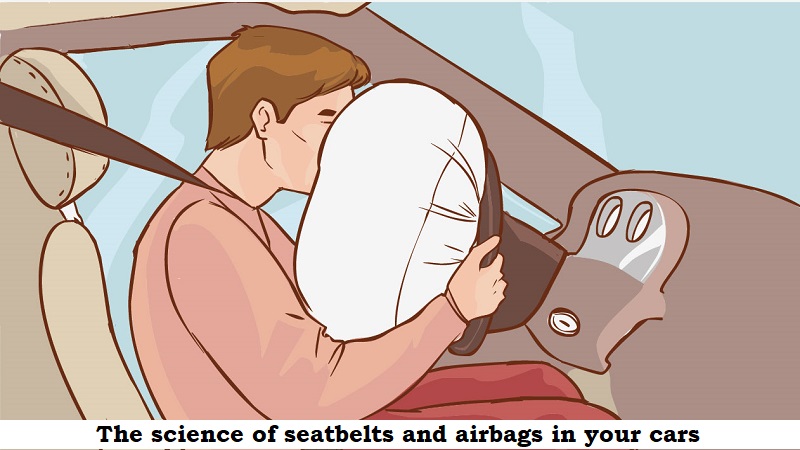
Every car has two fundamental safety features that function both before and after an accident to protect the occupants.
While the post-accident safety system comprises seatbelts and airbags, the pre-accident safety system includes traction control, antilock brakes, and electronic stability control, among other things.
The seat belts are attached to a spool that has an internal spring that generates rotational force or torque. The webbing is then fastened to the spool at one end. The spool rotates counterclockwise as the webbing is pushed out, spinning the spring in the opposite direction as the spring retracts. When the retractor is pulled firmly to simulate a collision, a locking mechanism prevents the spool from rotating back.
The seat belt controls how the force is distributed across the body as the car stops abruptly, preventing it from concentrating in one spot and causing G-forces to act. The retractor mechanism prevents you from being abruptly thrust forward and pulls you back, preventing you from striking the dashboard or, if you are seated in the rear, the headrest.
Airbags, which operate not only on electronics but also on chemistry, are another crucial post-accident safety mechanism. A automobile can have 6–8 airbags, although on Indian roads, two front airbags are often present for the protection of the driver and other passengers.
Instead of using technological orders to inflate, the airbags themselves rely on chemistry, specifically a chemical component known as sodium azide.
According to Scientific American, when the car’s sensors spot a structural flaw, they send an electrical signal to the sodium azide canister, which causes a little amount of an igniter compound to explode. The heat from this detonation causes the sodium azide to break down, and the chemical reaction that follows produces nitrogen gas, which fills the airbags.

Post Your Comments